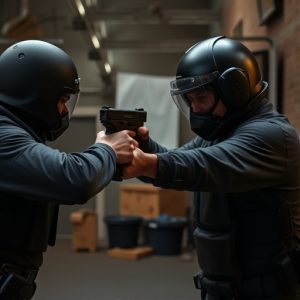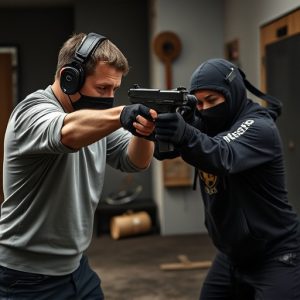Understanding Stun Gun Effects: Duration of Muscle Incapacitation and Legal Implications
Compact stun guns designed for purse carry offer a powerful yet non-lethal self-defense solution, te…….
Compact stun guns designed for purse carry offer a powerful yet non-lethal self-defense solution, temporarily disabling targets (5-15 seconds) without causing permanent harm. Their effectiveness depends on voltage settings, body mass of the target, and environmental conditions. Despite their small size, these devices can deliver significant incapacitation through high-voltage, low-current charges and capsaicin. Responsible use requires understanding local laws, proper training, and treating it as a last resort.
“The impact of stun guns, particularly compact models designed for purse carry, has sparked interest due to their growing popularity. Understanding muscle incapacitation duration is crucial for both users and law enforcement. This article delves into the science behind stun gun effects, exploring factors influencing paralysis duration and providing insights on compact stun guns’ performance versus size. Additionally, it covers legal considerations and safety precautions essential for responsible ownership.”
- Understanding Muscle Incapacitation: What Happens When Stun Guns Are Used?
- Factors Affecting Duration of Muscle Paralysis from Stun Guns
- Compact Stun Guns for Purse Carry: Size vs. Effectiveness
- Legal Considerations and Safety Precautions for Stun Gun Users
Understanding Muscle Incapacitation: What Happens When Stun Guns Are Used?
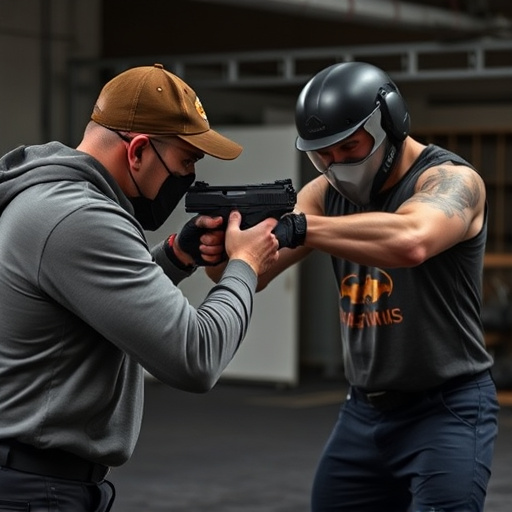
When a stun gun is deployed, its primary effect is to cause muscle incapacitation, temporarily disorienting and disabling the target. This happens through a powerful electric current that disrupts the nerve signals controlling muscle movement. The duration of this muscle incapacitation from compact stun guns for purse carry varies depending on several factors, including the stun gun’s voltage output and the area targeted. Typically, it can last from 5 to 15 seconds, enough time for an individual to create distance or deter a potential threat.
Unlike traditional firearms that rely on permanent physical damage, stun guns deliver a non-lethal force. The electric current interrupts muscle function momentarily, leaving no lasting effects on the target. This makes compact stun guns popular choices for personal defense, especially for women who carry them in purses for quick access during emergencies.
Factors Affecting Duration of Muscle Paralysis from Stun Guns
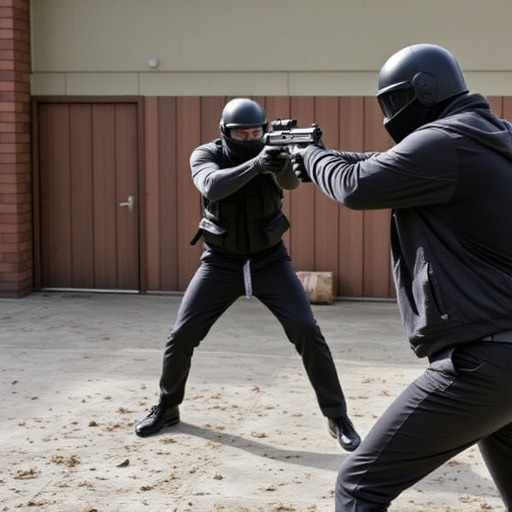
The duration of muscle incapacitation caused by stun guns can vary significantly, influenced by several key factors. One major consideration is the power output and voltage of the stun device itself. Compact stun guns designed for purse carry often have lower voltage settings compared to larger models, which can result in shorter durations of paralysis. This makes them less effective in neutralizing a target for an extended period.
Another critical factor is the target’s body mass and muscle tone. Individuals with higher muscle mass or more robust physical build tend to experience longer periods of incapacitation due to the stun gun’s energy being dispersed over a larger area, reducing its intensity per unit of muscle tissue. Conversely, smaller individuals might recover quicker as the same voltage translates to lower energy density on their muscles. Environmental conditions, such as temperature and humidity, can also play a role in how quickly a person regains mobility after being stunned, with warmer environments potentially speeding up recovery time.
Compact Stun Guns for Purse Carry: Size vs. Effectiveness
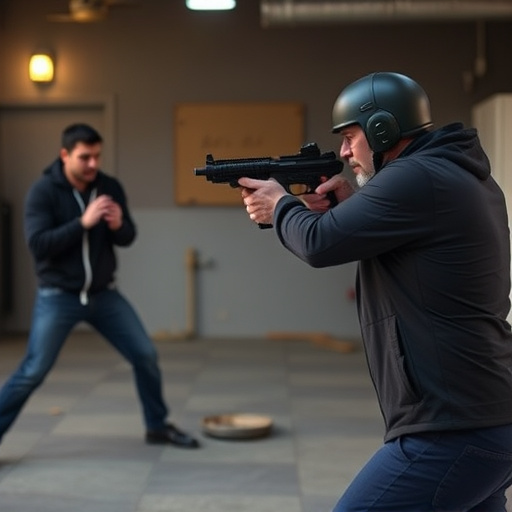
Compact stun guns designed for purse carry have gained popularity due to their small size and discreet nature, making them an attractive option for personal safety. However, when it comes to effectiveness, there’s a common question: do smaller stun guns deliver the same level of muscle incapacitation as their larger counterparts?
Despite their compact size, these stun guns can still pack a powerful punch. The key lies in the energy delivery and active ingredients used. Many compact models utilize high-voltage, low-current electrical charges to disrupt muscular control, causing the target to experience temporary paralysis. Effective compounds often include capsaicin, a compound found in chili peppers, which can induce pain and disorientation when directly applied to the skin. Therefore, while size may vary, proper design and active ingredients ensure that compact stun guns remain powerful tools for self-defense, offering users a sense of security without sacrificing effectiveness.
Legal Considerations and Safety Precautions for Stun Gun Users

When considering a compact stun gun for purse carry, users must be aware of legal considerations and safety precautions. The legality of stun guns varies significantly by jurisdiction, with some areas allowing them for personal protection while others restrict or outright prohibit their possession. It’s crucial to research local laws and regulations to ensure compliance. Safety precautions include proper training in the use of the device, as incorrect application can lead to muscle incapacitation duration that is either ineffective or prolonged, potentially causing harm to the user or bystanders. Users should also be cognizant of the range and power settings, using them only as a last resort when facing imminent danger. Carrying a compact stun gun responsibly involves understanding both the law and the device’s capabilities to maximize its effectiveness while minimizing risks.
In conclusion, understanding muscle incapacitation from stun guns involves grasping their immediate physiological effects and recognizing variables that can influence duration. Compact stun guns designed for purse carry offer a balance between size and effectiveness, catering to personal safety needs without compromising convenience. However, it’s crucial to navigate legal considerations and adhere to safety precautions to ensure responsible use. Staying informed about local regulations and understanding the capabilities of these devices can empower individuals to make informed choices for their protection.

